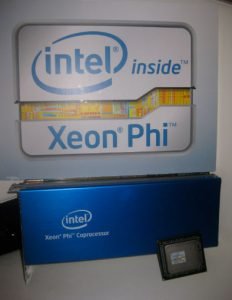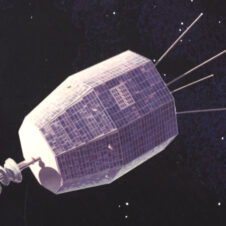Last month researchers from Perth’s International Centre for Radio Astronomy Research (ICRAR) joined global computing giant Intel in Germany at the launch of the new “many-core” processor called Xeon Phi, a technology that could help to solve the data challenge faced by international mega-science projects like the Square Kilometre Array (SKA) and will form a central part of the new Pawsey Supercomputer, which is being constructed in Perth.
With the recent decision to site the SKA, the biggest radio telescope in the world, in both South Africa and Australia, the astronomy world is abuzz at the prospect of entering the design and construction phases of what will be a ground breaking feat of science, engineering and computing.
However, radio telescopes, the engineers that build them and the scientists that extract science from the data they gather, are becoming increasingly reliant on the advances being made in the high performance computing domain. The SKA is expected to have data flowing from thousands of antennas spread over vast distances at speeds of between two and five petabits per second, a veritable torrent of information by today’s standards.
New Scientist recently estimated the global Internet data traffic in 2010 to be around 22,000 petabytes per month. The SKA is set to generate this volume of data every single day, requiring the world’s most powerful supercomputer. Last month IBM unveiled it’s new “Sequoia” supercomputer taking out the top spot in the list of the world’s fastest supercomputers. When the first phase of the SKA comes online in 2020 it will require a machine 100 times faster than this latest innovation. Of significant interest is the fact that IBM’s new machine is 50% more powerful than the previous #1 supercomputer but uses about 40% less power.
Last month iVEC & CSIRO announced the details for the Pawsey Centre SuperComputer which plans to pass the PetaFlop performance barrier in 2014 based in part around the new Intel “Many Integrated Core” Xeon Phi processor.
At the International Supercomputing Conference in Germany Intel rolled out this processor capable of executing over a trillion calculations per second. In an invited talk ICRAR researcher Dr Richard Dodson was able to present the work undertaken at ICRAR with a pre-release version of the new processor.
“This was a great opportunity to promote Australian research to address the SKA computational challenges, alongside some of the world’s leaders in the supercomputing industry” said Dr Dodson. “Xeon Phi allows our existing programs to be used across many many processing cores without having to make changes, therefore saving massive amounts of development time. This makes it very attractive to a range of computational tasks in radio astronomy,” he went on to say. “The Phi will be the low power CPU solution, and we – like all West Australians – are already worried about our power bills”.
Intel’s innovation is widely seen as a response to the success of “heterogeneous” computing allowed by the advances in graphics processing units (GPU’s). Originally designed for rendering images in videogames, they have been successfully used for accelerating more generic types of computations.
At the Netherlands conference another of ICRAR’s high performance computing team was describing why this innovation could be so important for radio astronomy. “Right now we can’t possibly process the amount of data the SKA will need to deal with using existing technology. To push the envelope we need to work with companies like Intel to come up with solutions that will make what’s impossible today a reality in the future,”” said Associate Professor Slava Kitaeff.
Intel has already unveiled a supercomputer built from the Xeon Phi many-core processors, demonstrating the potential of the new technology. Despite being an experimental system at this stage, the machine ranks 150th in the list of the world’s top supercomputers. The Pawsey machine will be a major leap forward, and is the first Phi-supercomputer to be announced since the launch.
Speaking about the results to date Associate Prof. Kitaeff said, “While the trials are going to continue, the first results are encouraging. This allows us to believe that we are firmly on the path to the exa-scale computing required for the first phase of the SKA, which is expected to come online in 2020.“
Dodson and Kitaeff are part of a group of ICT focused researchers at ICRAR working alongside supercomputing and large-scale data storage provider iVEC, also located in Perth. Since early this year the two institutions have been collaborating with computing giant Intel to help develop the technologies that might ultimately lead to a solution for the “data deluge” problem.
The International Centre for Radio Astronomy Research (ICRAR) is a joint venture between Curtin University and The University of Western Australia.
iVEC is an unincorporated joint venture between CSIRO, Curtin University, Edith Cowan University, Murdoch University and The University of Western Australia and is supported by the Western Australian Government.


